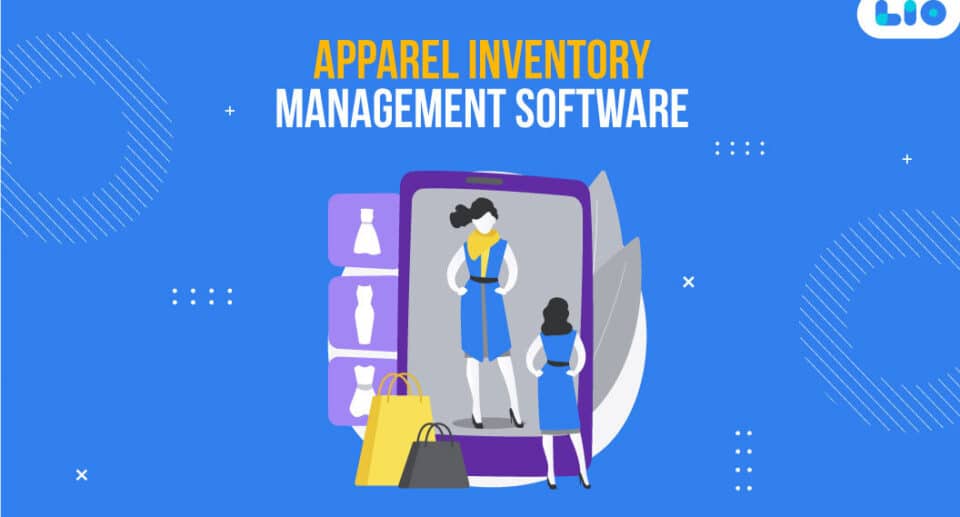Streamline Your Apparel Business with Effective Apparel Inventory Management Software
Surabhi Guleria
- September 2, 2023
- 7 Min Read

In the fast-paced world of apparel retail, efficient inventory management is crucial for success. Apparel inventory management software offers a comprehensive solution to effectively track, manage, and optimize inventory. This article explores the key features, benefits, and implementation of apparel inventory management software, helping apparel businesses streamline operations and drive growth.
Understanding Apparel Inventory Management Software
Apparel inventory management software refers to specialized software solutions designed to handle the unique inventory challenges faced by apparel businesses. It provides features and functionalities tailored to the apparel industry, enabling efficient management of inventory, orders, suppliers, and more.
Key Components of Apparel Inventory Management Software
Below listed are some of the key components of apparel inventory management software:
Inventory Tracking and Control
– Real-time tracking of apparel inventory across multiple locations and channels, providing a centralized view of stock levels.
– Granular control over stock attributes such as sizes, colors, and styles, enables precise inventory management.
– Automated stock adjustments, transfers, and cycle count to ensure accurate inventory records.
Order Management
– Streamlined order processing and fulfillment, reducing errors and delays in order shipments.
– Integration with e-commerce platforms to seamlessly manage online orders and inventory synchronization.
– Order status tracking and notifications for customers, enhancing transparency and customer satisfaction.
Demand Forecasting and Planning
– Utilizing historical sales data and market trends to forecast demand and plan inventory levels accordingly.
– Optimizing inventory levels based on demand patterns and seasonal fluctuations, reducing stockouts and overstocking.
– Aligning purchasing decisions with projected demand to optimize inventory investment and minimize costs.
Supplier Management
– Managing relationships with apparel suppliers, including communication, pricing negotiations, and lead time management.
– Automated purchase order generation and tracking to streamline the procurement process.
– Collaboration tools for seamless communication with suppliers, fostering strong partnerships.
Reporting and Analytics
– Access to real-time and comprehensive reports on inventory levels, sales performance, and profitability.
– Data-driven insights to make informed business decisions, identify trends, and optimize operations.
– Customizable dashboards and visualizations for easy data interpretation and monitoring.
Apparel inventory management software provides small and medium businesses in the fashion industry with the essential tools to efficiently track, control, and manage their inventory. It offers features such as real-time inventory tracking, streamlined order management, demand forecasting and planning, supplier management, and robust reporting and analytics capabilities.
By leveraging these key components, businesses can optimize their inventory control, enhance order fulfillment, make data-driven decisions, and drive profitability.
Benefits of Apparel Inventory Management Software
Let’s now discuss the many benefits of apparel inventory management software:
Improved Inventory Accuracy and Control
– Real-time visibility into apparel inventory across multiple locations, reducing stock discrepancies and improving inventory accuracy.
– Enhanced control over stock movements, sizes, colors, and styles, ensuring accurate inventory management and reducing the risk of stockouts or overstocking.
– Minimized stockouts, overstocking, and associated costs, leading to improved operational efficiency and increased customer satisfaction.
Streamlined Operations and Order Fulfillment
– Automated order processing and fulfillment, reducing manual errors and streamlining workflows, leading to faster and more efficient order fulfillment.
– Efficient order tracking and management, enabling timely and accurate deliveries to customers, resulting in improved customer satisfaction.
– Enhanced order accuracy and inventory availability, reducing order cancellations, returns, and customer complaints.
Enhanced Demand Planning and Forecasting
– Data-driven demand forecasting, leveraging historical sales data and market trends to accurately forecast demand and optimize inventory levels.
– Optimized inventory levels based on demand patterns, reducing excess inventory and holding costs while ensuring sufficient stock to meet customer demand.
– Improved demand planning, enabling businesses to respond effectively to seasonal fluctuations and market trends.
Improved Supplier Collaboration and Management
– Streamlined communication and collaboration with apparel suppliers, facilitating better coordination and reducing lead times.
– Automated purchase order generation and tracking, reducing administrative burden and improving efficiency in supplier management.
– Timely and reliable supplier performance monitoring, ensuring a high-quality and consistent supply of apparel products.
Data-Driven Decision Making
– Access to comprehensive reports and analytics, providing insights into sales trends, customer preferences, and inventory performance.
– Data-driven decision-making enables businesses to optimize pricing, promotions, and assortment strategies for better profitability.
– Improved visibility into key performance indicators, empowering businesses to identify areas for improvement and make informed decisions.
Implementing Apparel Inventory Management Software
Here is how you can implement apparel inventory management software in easy steps:
Assessing Business Needs
– Identify the specific inventory management challenges and pain points within your apparel business.
– Evaluate your current processes and determine the specific requirements you need from inventory management software.
– Consider factors such as the number of SKUs, locations, sales channels, and the complexity of your supply chain.
Choosing the Right Apparel Inventory Management Software
– Consider key features such as inventory tracking, order management, demand forecasting, and reporting capabilities.
– Evaluate the software’s ability to integrate with your existing systems, such as e-commerce platforms and accounting software.
– Assess scalability options to ensure the software can grow with your business.
– Consider the user-friendliness of the software and the level of support provided by the vendor.
Data Migration and Integration
– Plan and execute the migration of your existing inventory data into the new software.
– Ensure a smooth integration process by mapping data fields and establishing data transfer protocols.
– Test the integration to ensure accurate and seamless data synchronization between the inventory management software and other systems.
Training and Adoption
– Provide training to your team members on how to use the apparel inventory management software effectively.
– Foster a culture of adoption and encourage employees to embrace the new system.
– Offer ongoing support and resources to address any questions or concerns during the transition period.
How Lio can Help You?
To make your dreams come true of having a business of your own and managing it nicely, Lio App can help you big time. The app lets you keep all sorts of data together in a more organized manner. You can keep records, and create tables and lists while working solo or with a team.
The many features of Lio would help you with your retail business as you would be able to maintain all data on a track that you can use at any time. If you want to upload a document, then you can do that. Know the money transactions, cash inflow, profit and loss you are making, Udhaar, list of products, services, and even the teammates and clients that you have all in one place.
Your retail business ideas will certainly become successful businesses if you go on this journey of managing your business with Lio.
Conclusion
Apparel inventory management software is a game-changer for apparel businesses, offering a range of benefits including improved inventory control, streamlined operations, and data-driven decision-making. By implementing the right software solution and following best practices, apparel businesses can enhance efficiency, reduce costs, and drive growth in a highly competitive industry.
Frequently Asked Questions (FAQs)
Is apparel inventory management software suitable for small businesses?
Yes, apparel inventory management software is available in different versions, including solutions tailored for small businesses. These solutions offer essential features and scalability options to accommodate business growth.
Can apparel inventory management software integrate with e-commerce platforms?
Many apparel inventory management software solutions provide integration capabilities with popular e-commerce platforms. This enables seamless management of online orders, inventory synchronization, and real-time updates.
How can apparel inventory management software help reduce costs?
Apparel inventory management software helps optimize inventory levels, prevent stockouts, and minimize excess inventory. By avoiding overstocking and stockouts, businesses can reduce holding costs, carrying costs, and potential losses associated with obsolete inventory.
Can apparel inventory management software generate customized reports?
Yes, most apparel inventory management software solutions offer customizable reporting and analytics features. Businesses can generate reports on inventory levels, sales performance, profitability, and other key metrics based on their needs.
Is it necessary to migrate existing data to the new apparel inventory management software?
Migrating existing inventory data to the new software is recommended to ensure a smooth transition and maintain data accuracy. It helps businesses start with accurate inventory records and historical data for better inventory management.







